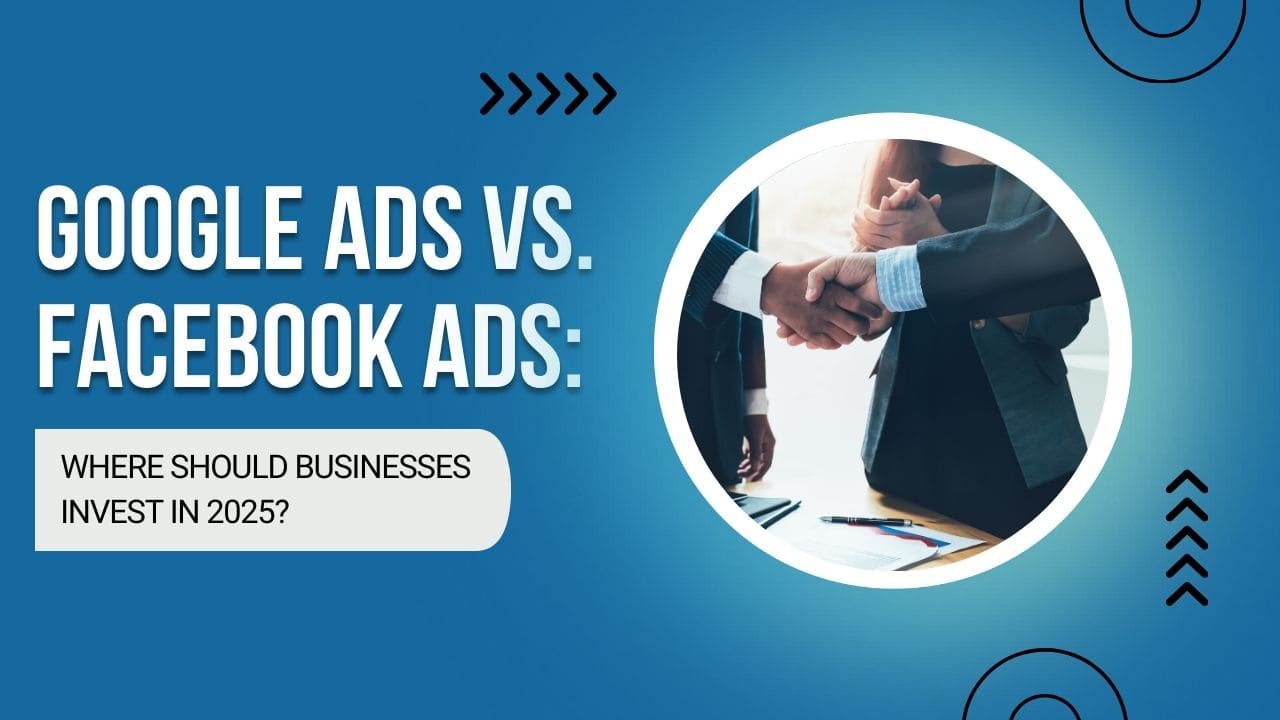Our Locations
Ahmedabad, Gujarat

Digital advertising continues to evolve strategically as businesses rationally allocate marketing budgets for profitable returns. Among dominant advertising platforms, Google Ads and Facebook Ads remain influential yet cater differing goals and audiences. By 2025, with artificial intelligence optimizing ads amid privacy laws and changing user behaviors, businesses must prudently choose platforms. This thorough guide examines pros and cons of Google Ads and Facebook Ads to help businesses make informed investment judgments.
Advertising Intentions and User Behaviors
Google Ads focuses on intent, featuring users actively searching for goods, services, or solutions. It works best fulfilling demands by targeting interested users ready purchasing or finding applicable information.
Facebook Ads involves interests, permitting businesses reaching users via demographics, passions, actions, and past interactions. It excels generating demands, cultivating recognition over time, and nurturing leads.
Audience Targeting and Reach
Ad Formats and Engagement
Cost & ROI: Google Ads frequently incur higher costs per click, especially for competitive keywords, yet generally see better conversions since users search with intent to buy. FacebookAds usually cost less per click but require experimenting with audiences and ads to optimize engagementinto results.
Verdict: Google Ads may be pricier but deliver high-intent traffic poised to purchase, whereas Facebook Ads necessitate testing creative approachesbut can yield better affordability.
Best Use Cases for Businesses: Google Ads suitably seize purchasers actively hunting via search, including e-commerce, localized companies, business-to-business exchanges, and servicecontributors.FacebookAds workbest forbusinessesemphasizing brand familiarity, customer interaction, lead nurturing, and styles of life-centered sectors.
Verdict: The perfect stage relies on business targets—GoogleAds for quick conversions and FacebookAds for long-termparticipation.
1. AI & Automation Advances: Both platforms leverage synthetic intelligence (AI) for improved targeting of ads, mechanized bidding, and individualized ad experiences, with Google’s Performance Max campaigns and Facebook’s AI-guided placementscontinually moldingadvertising tactics.
2. Privacy & Data Tracking Regulations: With growingprivacy issues and thephasing out of third-partycookies,companiesmustadjust to newmonitoring methods like Google’s Privacy Sandbox and Facebook’sfirst-party datasolutions.Advertisers require concentrating onfirst-party informationaccumulation and client relationship-building.
3. Rise of Video & Short-Form Content: Video advertising is expected tocontrol both platforms, withYouTube ads on Google andInstagramReels on Facebook achieving moretraction.Businesses should invest in high-quality video material to stay competitive.
Cross-Platform Advertising Techniques
An increasing number of companies adopt omnichannel marketing by interweaving Google Ads and Facebook Ads for a complete strategy. Utilizing Google Ads for intent-driven searches and Facebook Ads for brand bonding can optimize attainment and conversions.
Opting between Google Ads and Facebook Ads is reliant on several aspects like business type, target audience, finances, and goals:
Rather than selecting one platform over another, businesses in 2025 should leverage a mix of Google Ads and Facebook Ads. Google Ads can capture intent-driven traffic for prompt conversions, while Facebook Ads can nurture and engage audiences in the long-term. Testing both platforms, examining data-driven insights, and optimizing ad efforts will help companies maximize their advertising investment and drive superior results.
In a quickly evolving digital world, adaptability is key. Businesses should stay updated with platform changes, embrace AI-driven automation, and refine their advertising strategies for ongoing success.